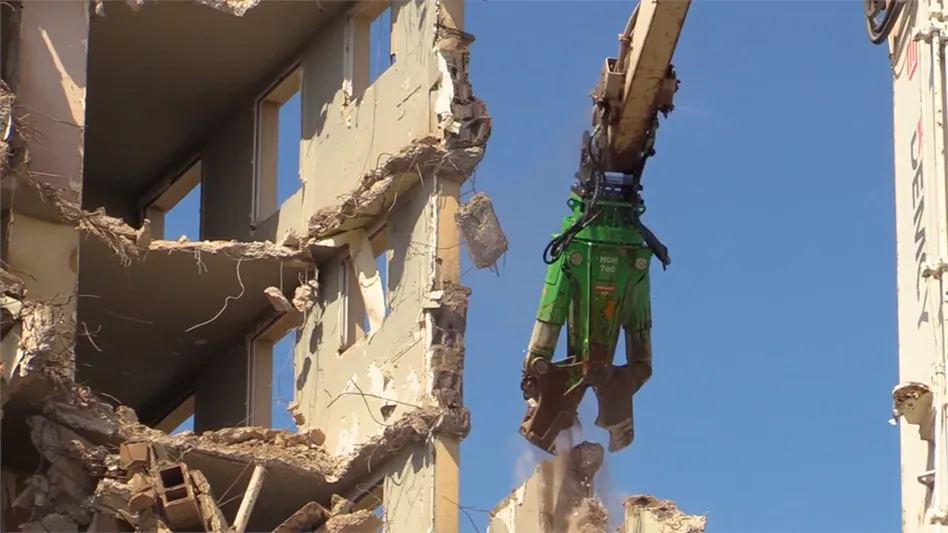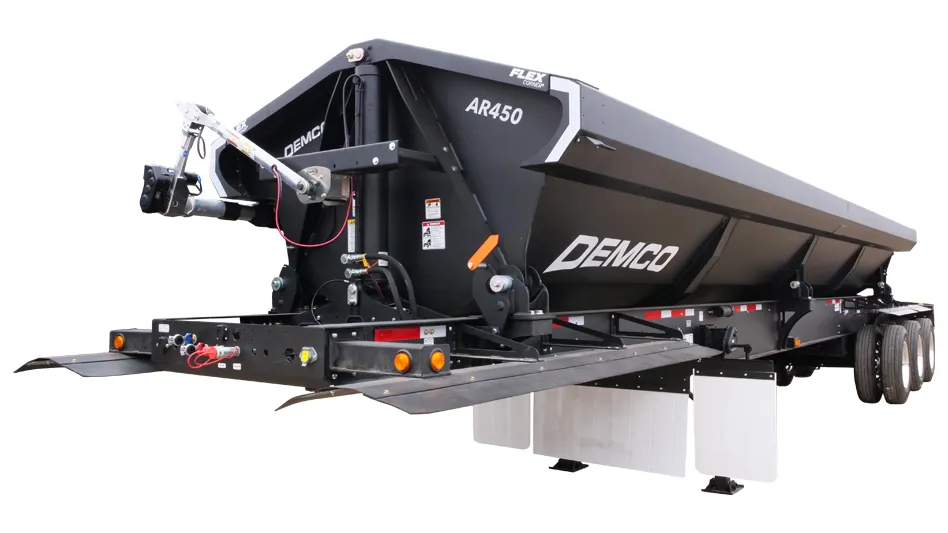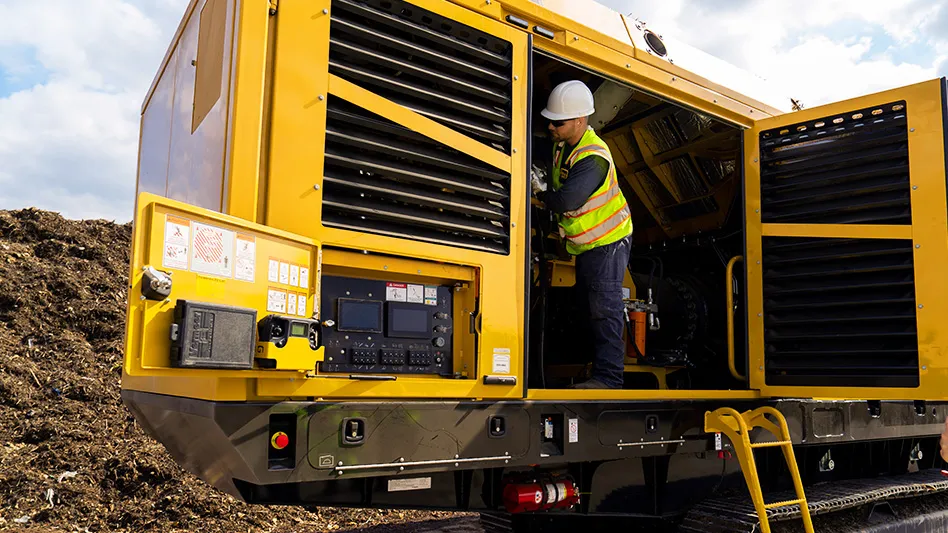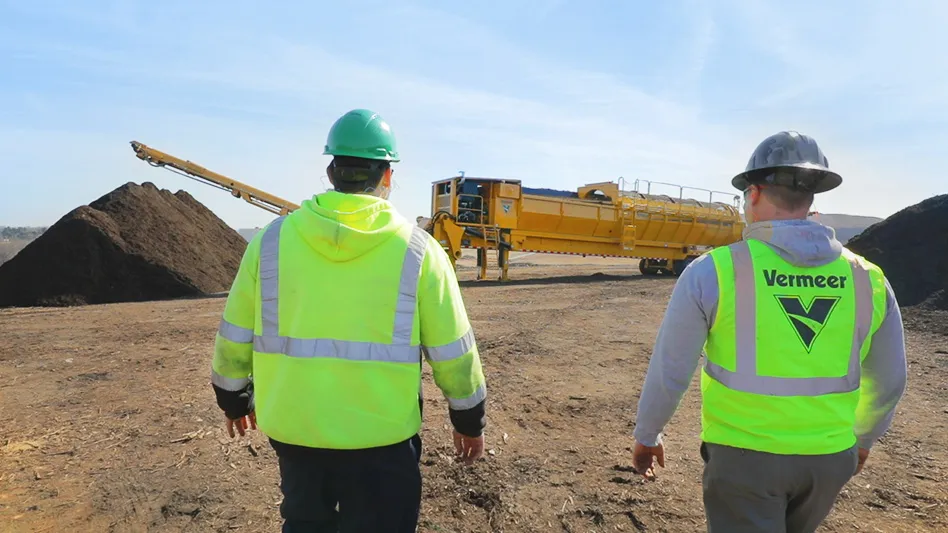
This time last year, all participants in the steel industry in North America were enjoying healthy conditions, strong pricing and stable markets. This price security carried them through the year—a review of 2018’s Fastmarkets AMM ferrous scrap pricing shows the publication’s Midwest index price for prime grades never fell below $369 or rose above $403 per ton for the entire calendar year.
This unprecedented price prosperity begged the inevitable question: Can ferrous scrap maintain its status quo?
This year delivered an unfortunate answer to that question. With extreme weather conditions, uncertainty over tariffs and challenges from a slowing global economy, scrap values have taken a major hit since January, equating to some of the weakest prices seen in years.
The flatline prices of last year are a stark contrast to this year’s rollercoaster pricing, which industry players hope has reached a bottom. Aside from a brief respite in March, prices the first half of the year were in freefall across all grades. From March to June, both prime and obsolete ferrous scrap values lost, on average, $1 a day.
Even with most ferrous grades experiencing a modest $20 boost in price in August—the first time values have risen since March—prices are down nearly $100 since the beginning of the year.
Despite the slight rise in prices recently, scrap dealers say they were hoping for more out of August and remain cautious about their prospects the rest of the year.
“Everybody thought prime grades would be up $30, and I think everybody’s a little disappointed by how things came up $20 across the board. Now, the talk is we’re hoping for a sideways market for September, but there’s already some talk that the market might be down,” says Willie Miller, the COO of Miller Scrap Iron & Metal Co. of Winona, Minnesota, reflecting on August scrap prices. “I think there’s some uncertainty about what the heck is going on out there.”
Mill mishaps
Prices this year have been plagued, in part, by a glut of supply. Downstream demand from related industries waned, and mills both domestic and overseas took advantage of the initial dip in prices early this year, buying up enough scrap to feed their electric arc furnaces (EAF) well through the spring season.
Coming off of last year, steel mills were feeling confident in their businesses. Section 232 tariffs on steel and aluminum had helped many as intended by discouraging imports of those materials, and capability utilization rates had finally broken past the 80 percent mark set by the U.S. Chamber of Commerce as a signifier of healthy production.
But some mills grew overzealous with their scrap buying and production, forcing them to adjust operations once summer rolled around. Scheduled mill outages in the summer, some of which lasted longer than anticipated, led to a nosedive in demand. U.S. Steel, for example, has temporarily idled two U.S. mills until “market conditions improve,” according to a company news release in August, leading to temporary layoffs of hundreds of workers.
Steel mills’ difficulties are evident in their recently reported second quarter earnings. All public mills reported weaker second quarter earnings this year compared to the same period last year due to softening end-market demand and weaker prices, especially of hot-rolled coil, which is down nearly $200 per ton since December 2018.
“Second quarter operating income was $11 million, a 47 percent decrease sequentially based on lower ferrous selling values and lower nonferrous shipment,” said Theresa Wagler, the CFO and executive vice president of Fort Wayne, Indiana-based Steel Dynamics Inc., during the company’s Q2 earnings call.
Mills, however, say they are anticipating a more upbeat second half of the year as key end-market demand improves and ferrous prices stabilize.
“Our financial results were lower than our expectations at the start of the quarter. Unusually wet weather and aggressive supply chain destocking impacted mill order rates in the first half of 2019. We have seen lower volumes during the first half of this year resulting in a more challenging price environment,” said John Ferriola, president and CEO of Nucor, Charlotte, North Carolina, during the company’s earnings call. “However, real demand for our products remains strong in key end-use markets. We see healthy conditions in end-use markets that typically account for more than two-thirds of our steel shipments. For this reason, we are cautiously optimistic that pricing has bottomed on most of our products and that volumes should be more closely aligned with real end-use demand in the second half of the year.”
Meanwhile, steelmakers’ capability utilization rates have been teetering on the ideal threshold throughout the summer. As of mid-August, the rate was at 79.8 percent, representing a 0.2 percent decrease from the same period in the previous year, according to the Washington-based American Iron and Steel Institute. Though a mild dip from the previous year, the decrease comes after rates were consistently improving on their previous years’ rates.

Slow flow
Along with plummeting prices, weather was a major talking point among scrap processors and steel mills the first half of the year as heavy rainfall flooded transportation routes and delayed construction and demolition (C&D) projects that may have otherwise contributed to scrap flows.
The wet season carried on longer than normal, leaving some regions still dealing with the effects well into summer. And in some parts of the country, the rain was only followed by extreme heat, further stifling C&D activity as some laborers stopped working by the early afternoon to avoid the hottest part of the day.
“We’ve just got major heat waves down here—in the three digits every day—and that definitely slows [flows] down,” says Jim Shapiro, the owner and vice president of Austin Metal and Iron in Texas. “And then with pricing, it’s kind of the perfect storm.”
While scrap from the manufacturing sector is relatively stable, peddlers have been holding onto obsolete grades in hopes of a market rebound, sources say. Flows from the demolition sector also have been healthy this year, says Andrew DeBaise, Rocky Mountain Recycling executive director and member of the National Demolition Association.
“Overall flows of scrap material have been off between 20 to 30 percent to date compared to previous years, depending on your region. However, the material generated from demolition-related projects has been strong, especially compared to last year. This is one of the few sectors that has remained, partly due to projects that were bid prior to market fluctuations coming to fruition,” DeBaise says.
However, DeBaise adds that demolition can remain busy even when the economy starts to slow—a current happening that economists are predicting may lead to a mild recession within the next year or two based on numerous indicators. Anirban Basu, the chief economist for Washington-based Associated Builders and Contractors (ABC), says risks abound for a recession.
“It's difficult to establish which risk is the most serious, but the list is long: trade disputes, Iran, corporate debt, household debt, federal debt, elevated and vulnerable asset prices, and the specter of next year's elections, which may induce many economic actors, including real estate developers, to embrace a wait-and-see posture,” Basu said in a recent economic report for ABC. “The election's growing imminence may itself be enough to further slow U.S. economic growth.”
Trouble overseas
When demand at home has diminished in the past, exports have often been enough to prop prices up. Exports this year, however, have been somewhat unpredictable.
Last year was a strong one for ferrous scrap exports, rising 14 percent over 2017, according to the Institute of Scrap Recycling Industries (ISRI). Initial signals from the export market in 2019, however, are not as promising. Fastmarkets AMM reported in April that January 2019 ferrous scrap export volumes were down nearly 21 percent compared with January 2018, according to U.S. Department of Commerce of data.
Turkish mills of late have been the largest overseas buyers of U.S. ferrous scrap thanks to their large EAF presence. Their purchases this year, however, have been spotty. According to the World Steel Association, Turkey’s crude steel production for June 2019 is down 11 percent from the same period the previous year. In the first three months of the year, it was down nearly 15 percent.
That production has translated to a steep decline of scrap purchases, writes Rolf Willeke, the statistics advisor of the Bureau of International Recycling (BIR) Ferrous Division, on BIR’s website. According to Willeke, the country’s overseas scrap purchases declined nearly 28 percent the first three months of the year compared to the same period in the previous year. Willeke attributes this to U.S. import tariffs on Turkish steel, along with weak long steel demand and weakness of the Turkish lira.
China may have been able to pick up some of the slack as the country continues adding to its EAF capacity, increasing its steel scrap usage by 14 percent the first three months of 2019, according to BIR. But with an ongoing trade war between the U.S. and China, the country has sought its scrap input elsewhere.
Tariff talks
Despite a weakening global economy, many are predicting a sideways or slightly up market for ferrous scrap prices the rest of the year.
“While overall worldwide economics remain weak, as reflected in continued lower month-over-month PMIs, the end of the summer should bring back some seasonal demand,” says George Adams of SA Recycling LLC, based in Orange, California, on BIR’s website. “With scrap now in tightening supply, it should support current market prices with the potential for upside as we move into the seasonally stronger months.”
Though ongoing tariffs have rippled a wave of uncertainty across the globe, many of the larger U.S. steelmakers continue to praise the ongoing efforts of President Donald Trump and his administration in bolstering the industry.
“The U.S. steel industry continues to benefit from effective trade enforcement. Through May 2019, total and finished steel imports declined by 12 percent and 18 percent from last year's levels. In the last 12 months, approximately 6 million fewer tons of imported steel have come into the U.S. market,” Feriola said during Nucor’s earnings call. “The decrease in imports reflects the cost competitiveness of our domestic steel industry and the success of our industry’s ongoing efforts to see that the rules of trade are enforced.”
As for how tariffs affect scrap prices, the verdict is still out. However, Greg Schnitzer, the president of BIR’s Ferrous Division, estimates that the outcome could prove beneficial.
“Section 232 is nothing new, but as time goes on, the feeling of a resolution grows closer,” he writes on BIR’s website. “I think we would all agree this would be a positive impact for everyone.”
This article originally ran in the September-October issue of Construction & Demolition Recycling. The author is the assistant editor for Construction & Demolition Recycling and can be reached at tcottom@gie.net.
Latest from Construction & Demolition Recycling
- Brokk opens new Canadian distribution center
- EPA announces $3B to replace lead service lines
- NWRA honors award recipients during annual breakfast at WasteExpo
- Safe Fleet, ITA Dynamics unveil integrated financial, route management system
- Bateman unveils 210 series orange peel grapple
- Republic reports first quarter growth
- Meridian Waste completes second acquisition of 2024
- NEPA revisions could delay critical infrastructure, ABC says





